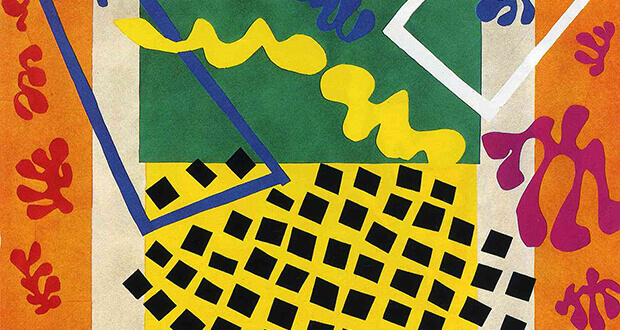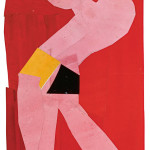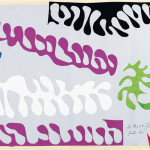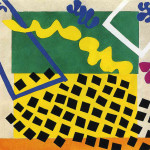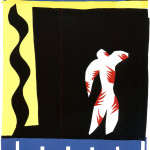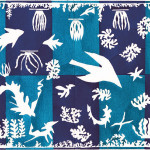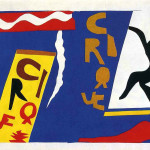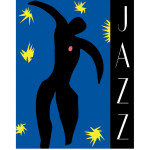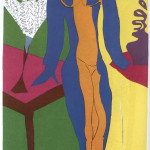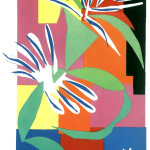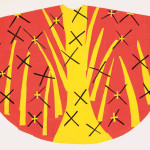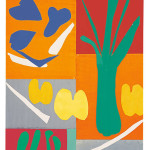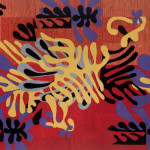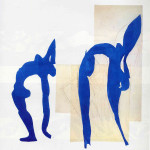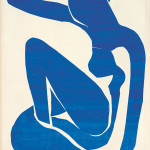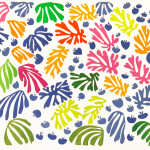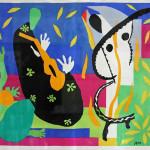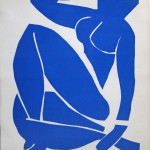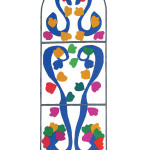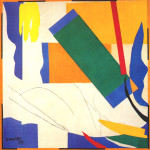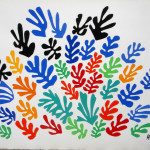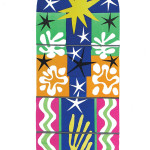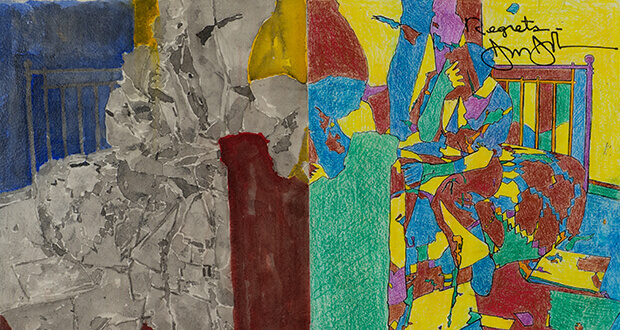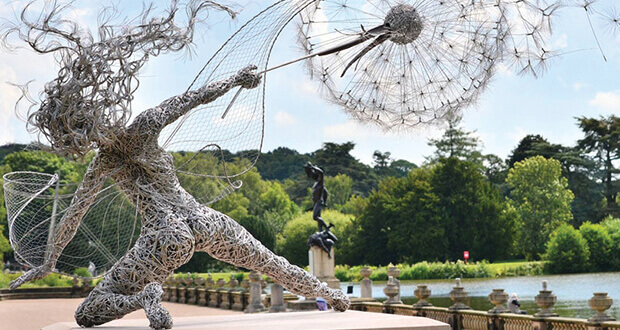Tate Modern, London
Untill 7th Settember 2014
In 1941, the french artist Henri Matisse (1869-1954) was diagnosed with cancer, and underwent a risky operation. After the surgery was confined to a wheelchair and his failing health prevented him from painting. The specter of death on the horizon and his new physical condition rather than drown in a dark depression, not only did not stop his extraordinary creativity, but pushed him in the completely opposite direction, so as to press him to celebrate life in all its forms. He called this the next step, Une seconde vie, a second life, in which he found an irrepressible energy.
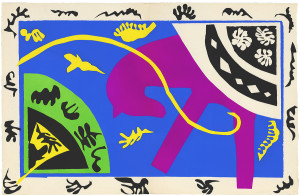
At the Tate Modern is now possibile to see a large exhibition with 130 works of the collages of Matisse, organized in collaboration with the Metropolitan Museum of New York where it will be transferred in October. “This is one of those exhibitions that happen only once in a lifetime” – said Nicholas Serota, director of Tate who was in charge of the first-person retrospective – “For many it will be one of the most compelling and evocative exhibits that Tate has ever made . There are all the important works“.
The chronological order of the exhibition shows how Matisse had started around 1937 with small collages used as an aid in determining the composition of a picture, and then he realized their potential perfecting his technique and turning them into works of art in their own right . The more more the artist approached the end of his life, the more collages were increasing in size and saturate color. The “Composition with Masks” of 1953, for example, a tribute to the Islamic decorations of the Alhambra made during the last year of his life, measures 10m x 3,5m. Limited in his studio, Matisse used to wander with his memory, turning back to use shapes and colors of the places he had seen decades earlier in his travels around the world. The memories of a holiday in Tahiti in 1930, for example, inspired the Oceania series of collages with images of fish and birds.
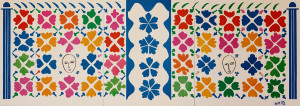
The triumphal hymn to life: this is the collage by Henri Matisse, cutted and pasted by the aged artist using scissors instead of the brush. With the help of his russian assistant Lydia Delectorskaya, on an enormous scale, Matisse used a small pair of scissors to cut the shapes freehand. He saved both the cut and other scraps of paper. Sometimes, he used stencils cut from thin sheets of metal, by hand. As he explained in a letter to his son, unable to get out he decided to “bring the garden into the house“, transforming the walls of his studio in Vence, in the south of France, in a blaze of shapes, colors, flowers and plants up to achieve the desired balance of color and shape as the scale and intensity of the color of the paintings; the scissors of Matisse were accurate as a pen.
An important part of the charm of these works can be found in their almost childlike simplicity, and this is the magic that Matisse celebrates the joy of creativity that is often found in children who paint and create without prejudice. Not an abandonment of sculpture and painting, but as Matisse said, he like “painting with scissors“. An experiment that gave him the opportunity to create a fresh and artistically attractive environment. This cropping that has sparked a flurry of creativity and inventiveness was perhaps a resistance to the idea of death? The excitement of the artist draws vital energy from these cuttings turning into a potential proliferation, flow and spatial expansion?
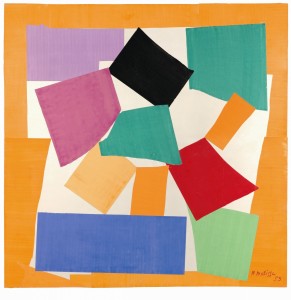
No other serious artist had made collages with such ease. Often derided by critics at the time, the artist felt that this new life with collages was an expansion of his creative spirit. Jazz as “chromatic and rhythmic improvisation“.This is the way the artist interpreted his work, like jazz music, a very lively job , with a rhythmic arrangement and unexpected improvisation. The Parisian artist has published a collection of works called “Jazz” in 1947’s. The limited edition book (100 copies) contains 20 color plates of his paper cut collages, accompanied by his written thoughts. He was so fascinated by the technique that he designed that he designed the windows of the Chapelle du Rosaire in Vence with the cut-outs. A project that took almost four years to be completed, and it was a gesture of gratitude to a woman who had healed him in 1941, and who later became a Dominican nun.
Henri Matisse, the abstract painter who almost reinvented the color in painting, found the absolute freedom in the poverty of the clippings. One day he said that only the works he created after his illness represented his “real self: free, liberated” and this retrospective is a compelling reflection of his most exuberant and vibrant works.
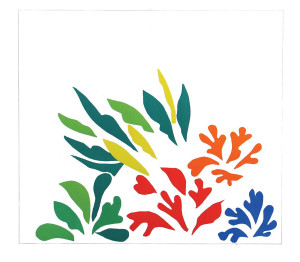
Rare footage of the artist at work on the collages reveal his technique: was always him in a wheelchair to use scissors to create the shapes he wanted with great rapidity, precision and dexterity, choose colors to use, while her assistants pinned and then pasted the maquettes on large sheets of paper attached to the walls of the studio. To explain its dynamism and its vitality Matisse once said that a true artist “should never be a prisoner of himself, of his reputation, of his style or of his success“.
Sophie Matisse, pronipote dell’artista, presente all’inaugurazione, ha detto che la famiglia è felice di questa mostra: “È incredibilmente commovente vedere tutte queste opere riunite per la prima volta e rivedere i filmati del mio bisnonno al lavoro. Era anziano e sapeva che sarebbe morto presto, ma le sue opere non hanno nulla di vecchio, sono giovani e piene di vita”.
Sophie Matisse, great-grandson, who attended the inauguration, said that the family is happy about this exhibition: “It’s incredibly moving to see all these works together for the first time and review the videos of my great-grandfather at work. He was elderly and knew he would die soon, but his works are not old at all, they are young and full of life. ”
Matisse in his studio while working on collages:

